Games are fantastic for bringing people together, especially at family reunions! They encourage interaction, break the ice, and create lasting memories filled with laughter and fun. Whether you’re planning a large family gathering, a birthday bash, or just a weekend get-together, having a repertoire of engaging games is always a winning strategy. These games are perfectly suited for bigger groups, ensuring everyone gets involved and has a blast. Get ready to discover some amazing games, and be sure to stick around for the last one – it’s my personal favorite!
Exciting Games for Large Groups
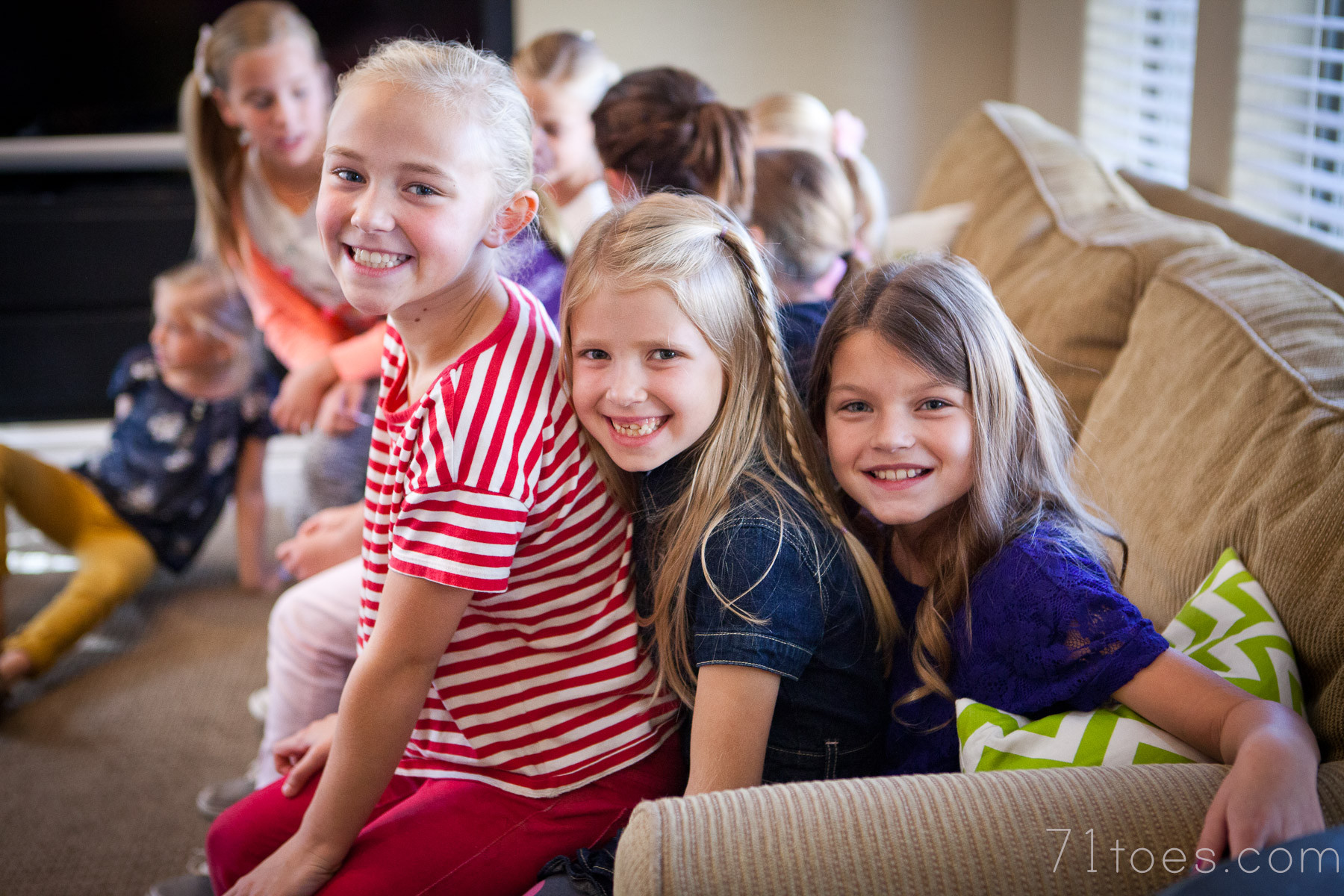
Three-Deep: The Matching Mayhem
How to Play: Prepare slips of paper, each with a word that has two counterparts. For example, “apple” could be paired with “banana” and “orange” (fruits), or “lion” with “tiger” and “bear” (animals). Distribute one slip to each person.
Gameplay: Before starting, everyone mingles and swaps papers to mix things up. When someone shouts “Go!”, participants call out the word on their paper, trying to find the two people who have matching counterparts to form a “three-deep” group. Groups sit down once formed, often designated as “bottom,” “middle,” or “top” based on pre-assigned letters on their slips.
Why it’s great for reunions: This game is energetic and hilarious as everyone yells out their clues. The last groups to find their matches are eliminated, adding a fun competitive edge until only a winning group remains.
Penny Game: Gamble for Giggles
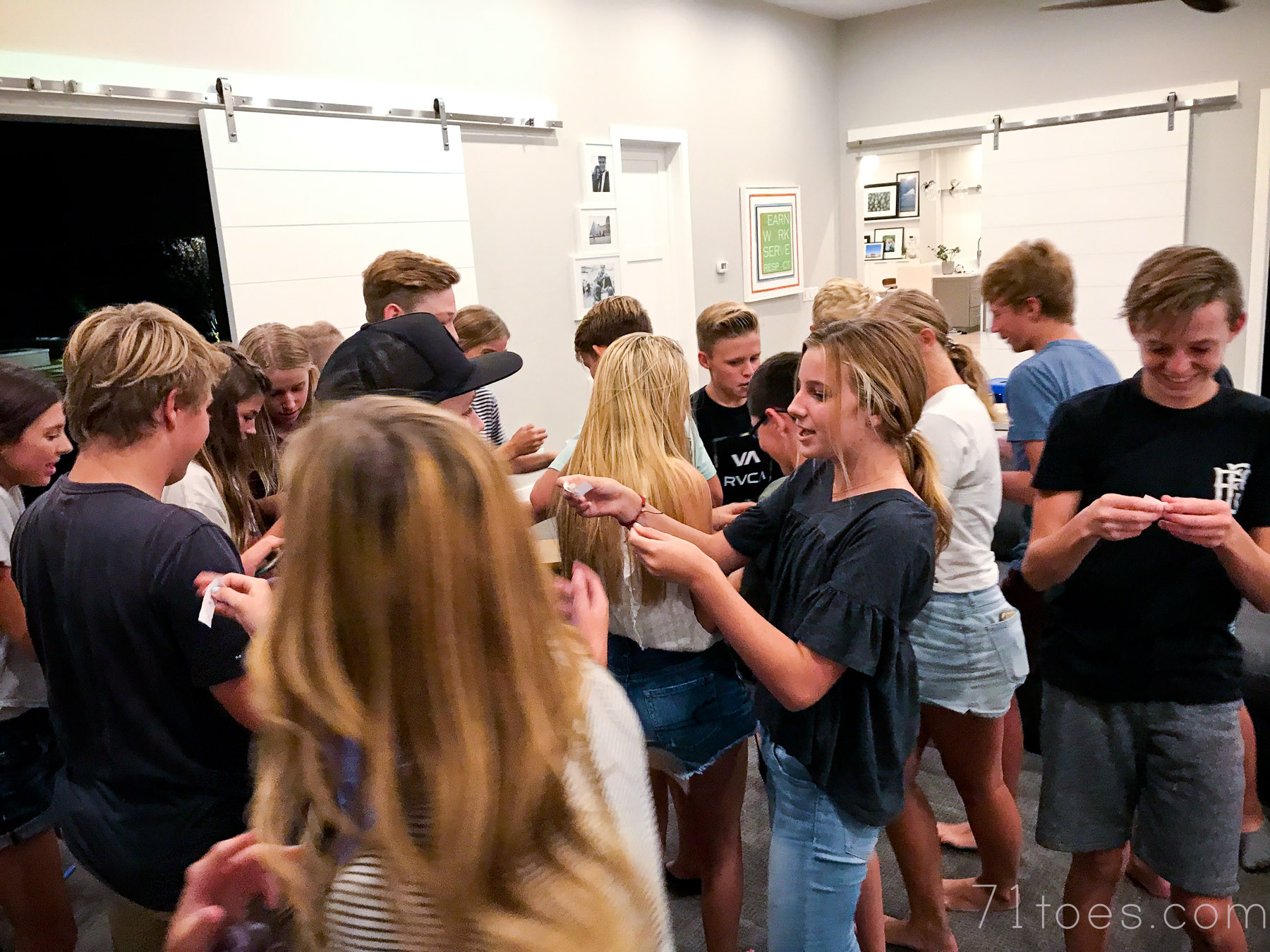 Alt text: A group of people playing the Penny Game at a family reunion, focusing on outstretched hands with coins.
Alt text: A group of people playing the Penny Game at a family reunion, focusing on outstretched hands with coins.
How to Play: Simple and portable, perfect for any location. Each player starts with three coins. Decide on a funny or silly consequence for the loser beforehand – think singing loudly in public or doing silly chores.
Gameplay: Players hide their hands behind their backs and choose to put 0-3 coins in one hand, making a fist. Everyone guesses the total number of coins held out by all players. Guesses can’t be repeated, and guessing order rotates each round. After guesses, hands are revealed, coins counted, and the person with the closest guess is “out” and safe from the loser’s consequence.
Why it’s great for reunions: This game is easy to learn, builds anticipation with each guess, and ends with hilarious consequences for the final loser, making it memorable for everyone.
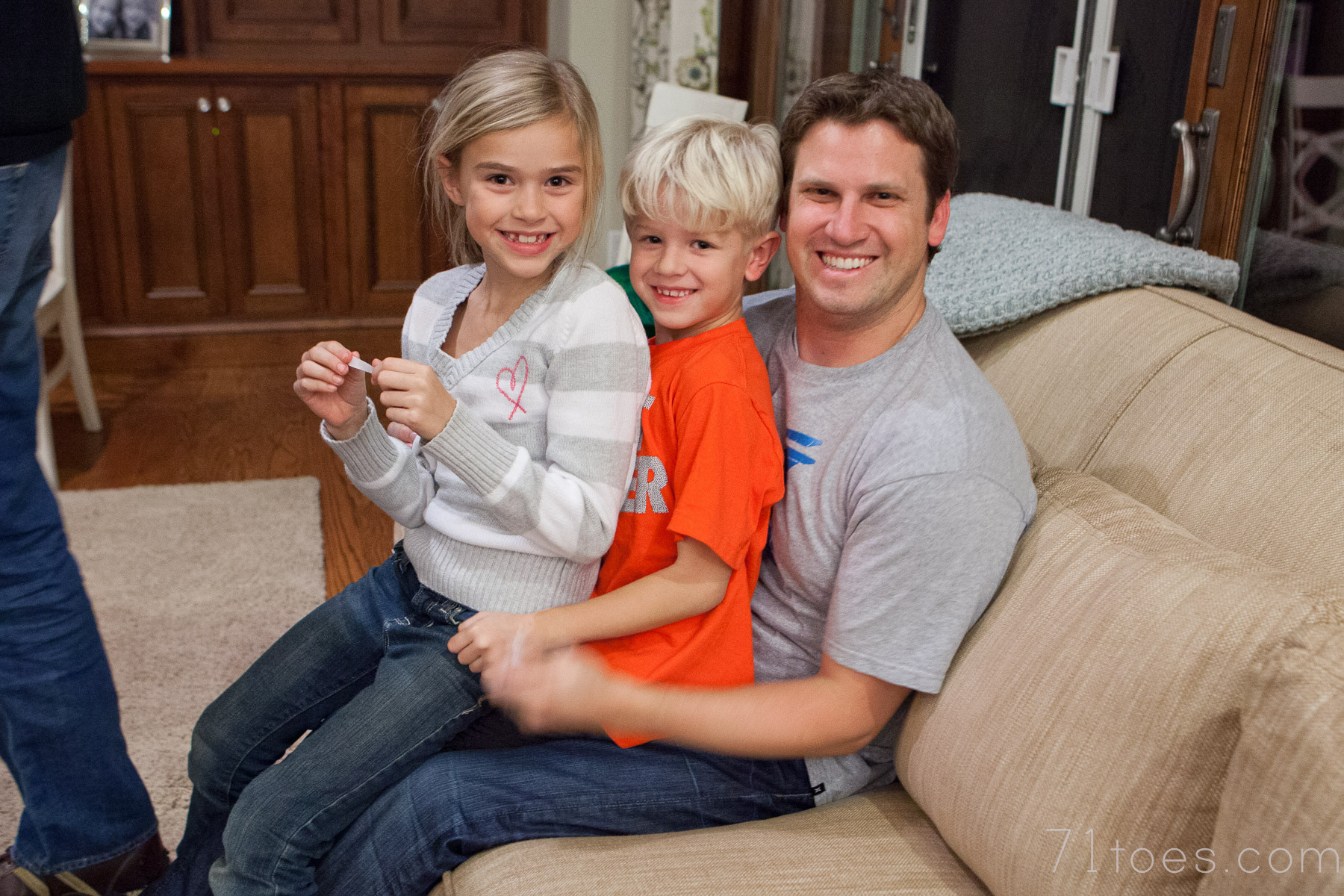 Alt text: Family members sitting three-deep on the floor playing a matching game during a holiday reunion.
Alt text: Family members sitting three-deep on the floor playing a matching game during a holiday reunion.
Animals: Guess the Sound
How to Play: Gather everyone in a circle. One person is blindfolded in the center, spun around gently, and then points to someone in the circle.
Gameplay: The pointed person makes an animal sound. The blindfolded person tries to guess who made the sound. The trick is for the sound-maker to disguise their voice! If the guess is wrong, everyone claps once, and the center person guesses again. If correct, the sound-maker becomes the new blindfolded guesser.
Why it’s great for reunions: “Animals” is silly and engaging for all ages. Disguising animal sounds and trying to identify voices while blindfolded leads to lots of laughs and fun interactions.
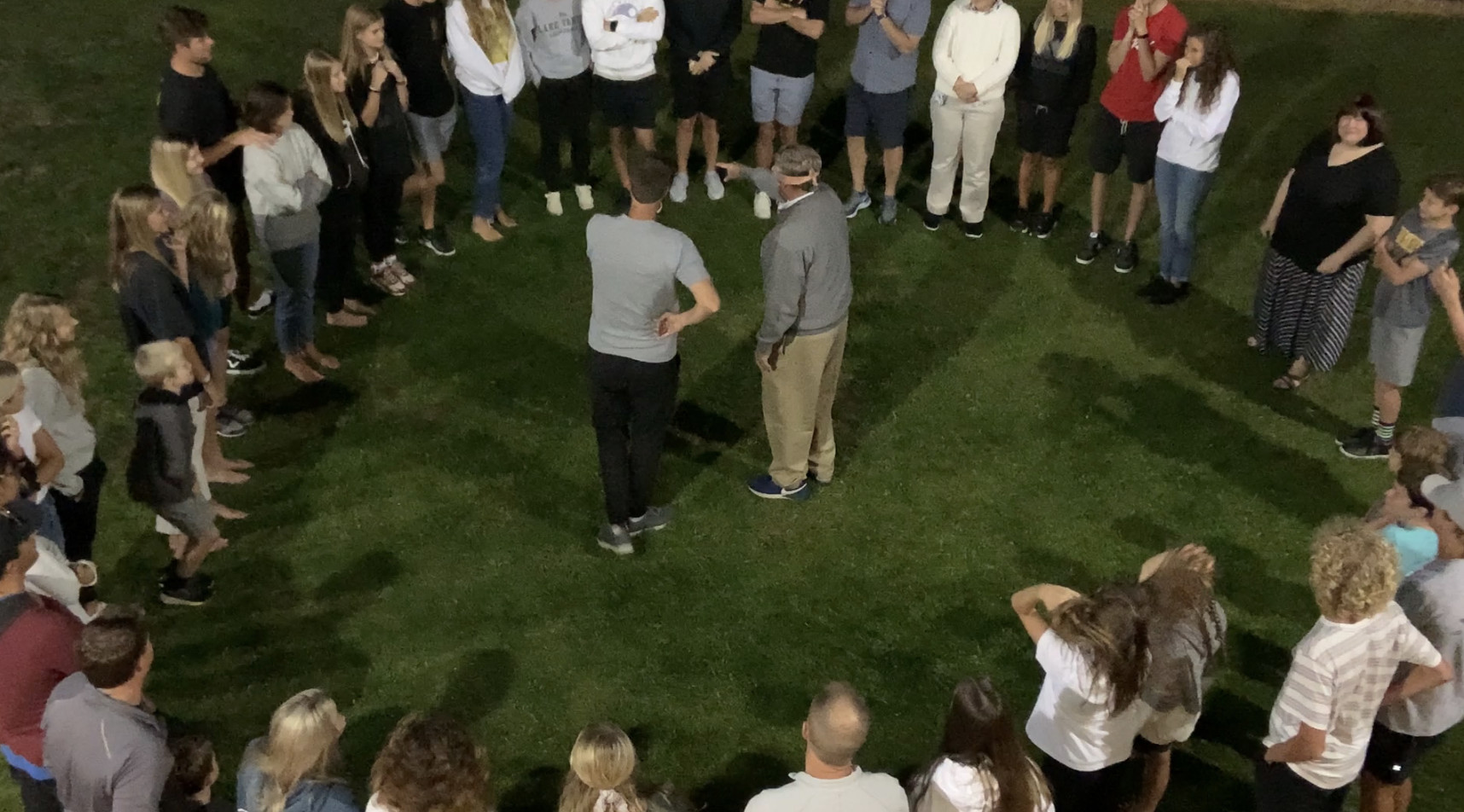 Alt text: Screenshot from a video showing a person playing the Animals game, making an elephant sound.
Alt text: Screenshot from a video showing a person playing the Animals game, making an elephant sound.
Minute-to-Win-It Challenges: Beat the Clock!
Minute-to-Win-It games are quick, high-energy challenges perfect for large groups. A quick online search will reveal tons of options! Here are a couple of favorites:
1) Cheetos Head Toss: Creamy Catch
How to Play: Teams select two representatives. One covers their head in shaving cream, the other stands a set distance away and tosses Cheetos, trying to get as many to stick to the cream as possible in one minute.
Gameplay: It’s a race against the clock and other teams to see who can get the most Cheetos to stick.
Why it’s great for reunions: It’s messy, hilarious to watch, and highly competitive. Be prepared for shaving cream and Cheeto chaos!
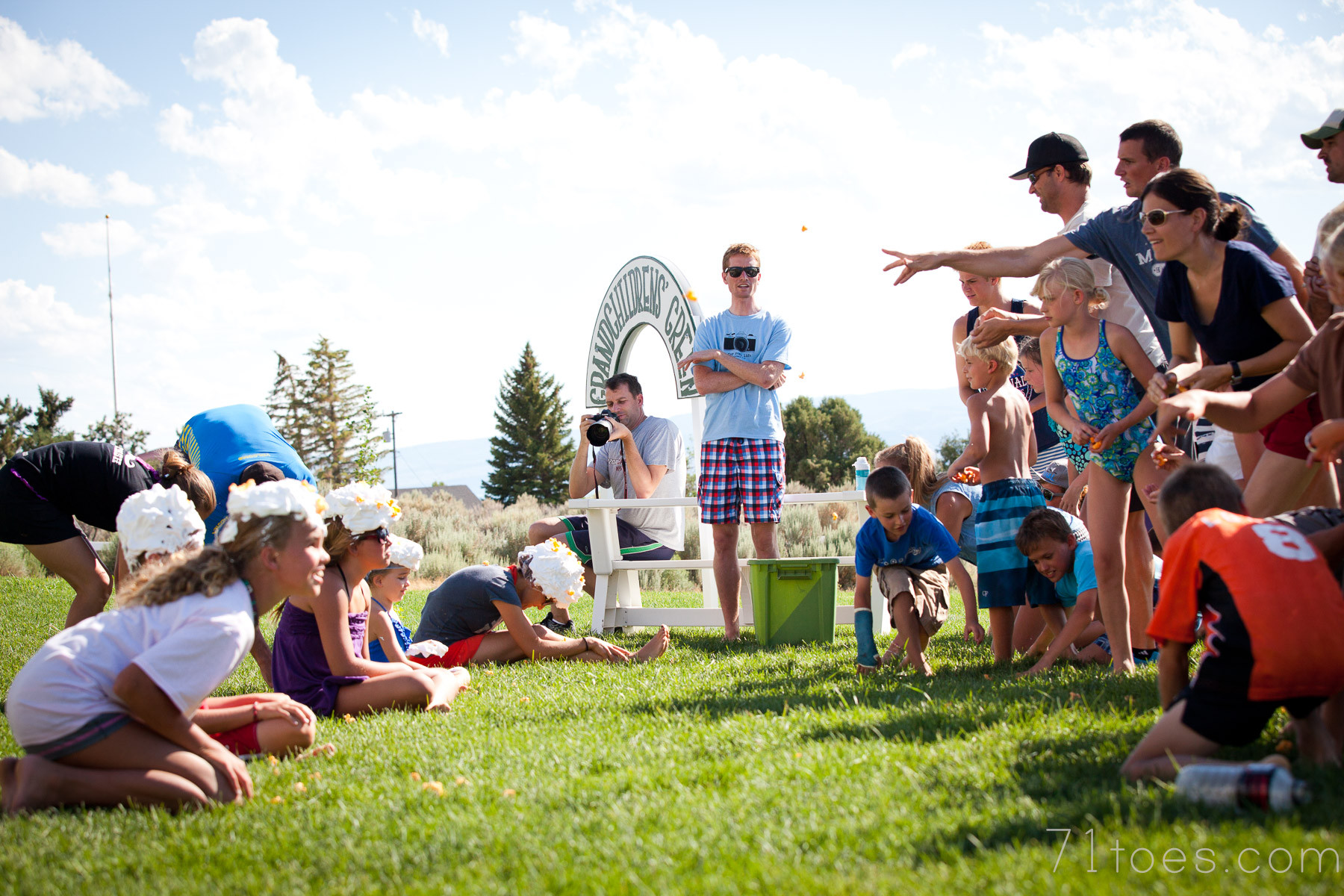 Alt text: A child with shaving cream on their head participates in a Cheetos tossing Minute-to-Win-It game at a family reunion.
Alt text: A child with shaving cream on their head participates in a Cheetos tossing Minute-to-Win-It game at a family reunion.
2) Shake-It Box: Ping Pong Frenzy
How to Play: Fill empty Kleenex boxes with ping pong balls. Attach a box to each player’s waist using a belt or strap.
Gameplay: Players shake, jump, and wiggle to empty the boxes of ping pong balls as quickly as possible. First to empty their box wins!
Why it’s great for reunions: “Shake-It” is active, silly, and guaranteed to get everyone moving and laughing as they try to bounce out those ping pong balls.
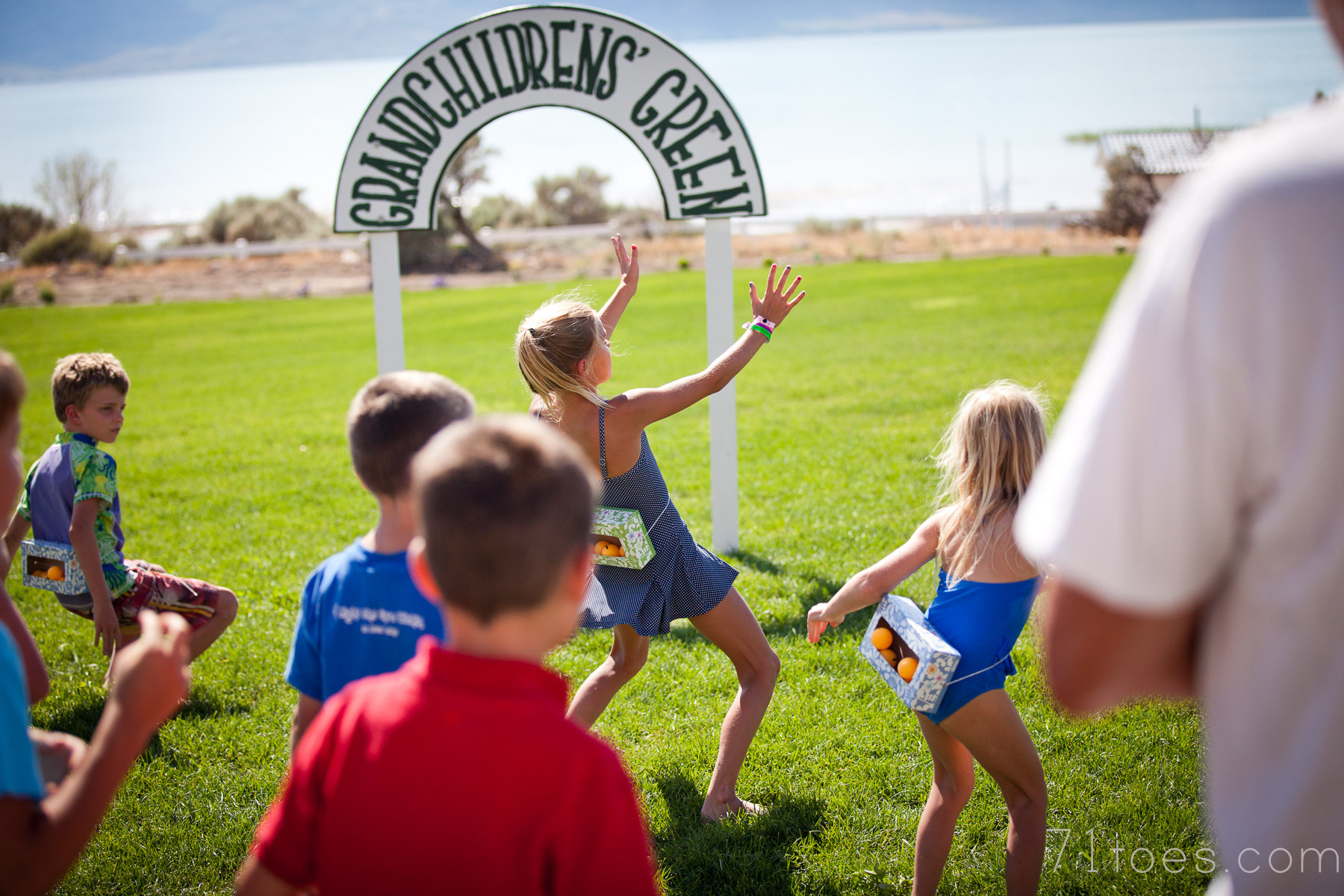 Alt text: A person with a tissue box strapped to their waist, playing the Shake-it Minute-to-Win-It game at a family gathering.
Alt text: A person with a tissue box strapped to their waist, playing the Shake-it Minute-to-Win-It game at a family gathering.
Reverse Charades: Act it Out, Fast!
How to Play: Download a “Reverse Charades” app or prepare word slips. Divide into teams. One person from each team stands facing away from their team. They hold a phone (with the app) or word slip on their forehead, visible to their team but not to them.
Gameplay: The team acts out the word for the person holding the phone/slip to guess. Once guessed correctly, tilt the phone or get a new slip for the next word. Teams try to guess as many words as possible within a time limit.
Why it’s great for reunions: Reverse Charades is collaborative, fast-paced, and hilarious, especially when family members try to act out words together. It gets everyone involved, even those who are usually shy.
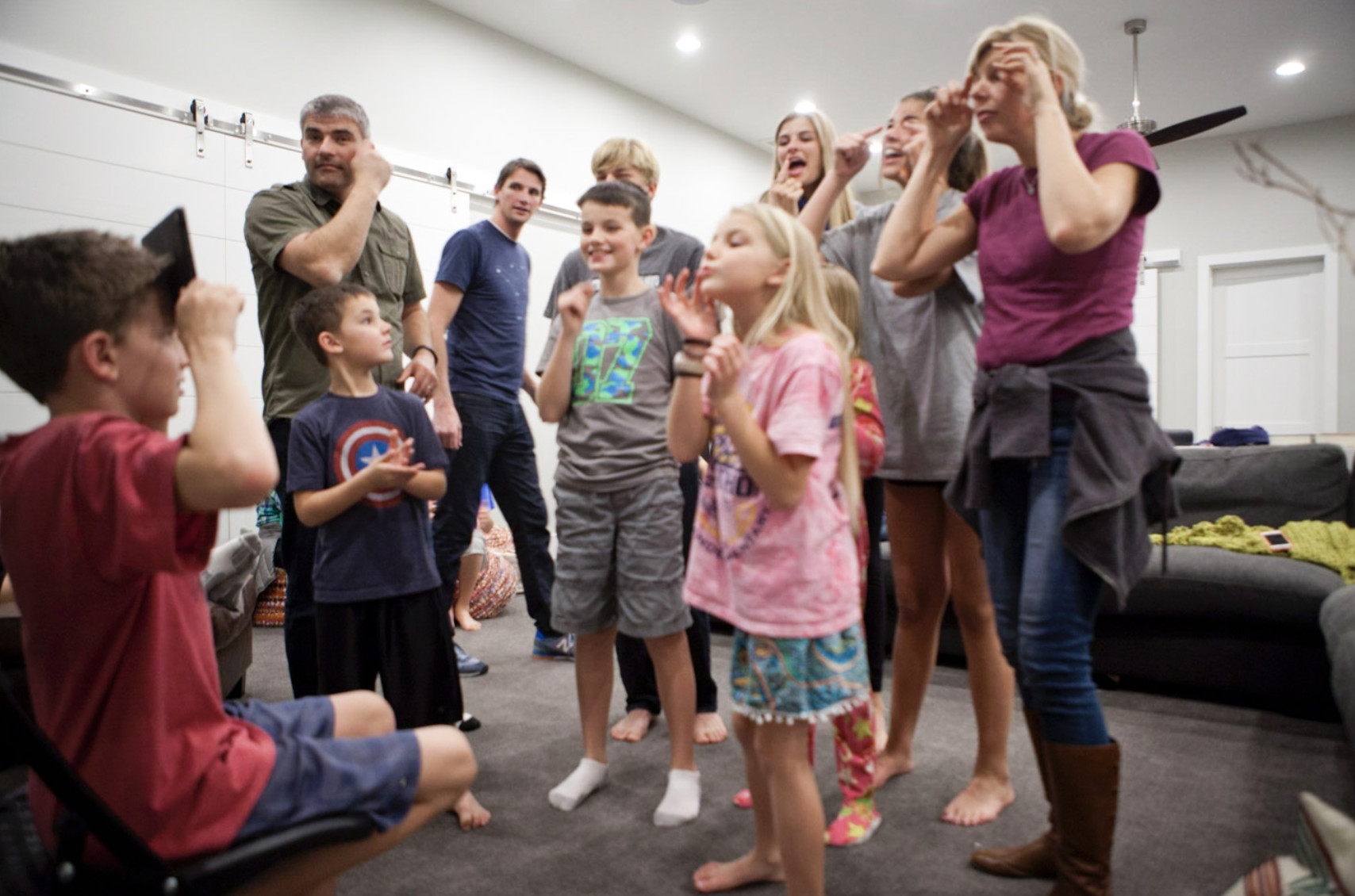 Alt text: Screenshot of the Reverse Charades app interface on a smartphone.
Alt text: Screenshot of the Reverse Charades app interface on a smartphone.
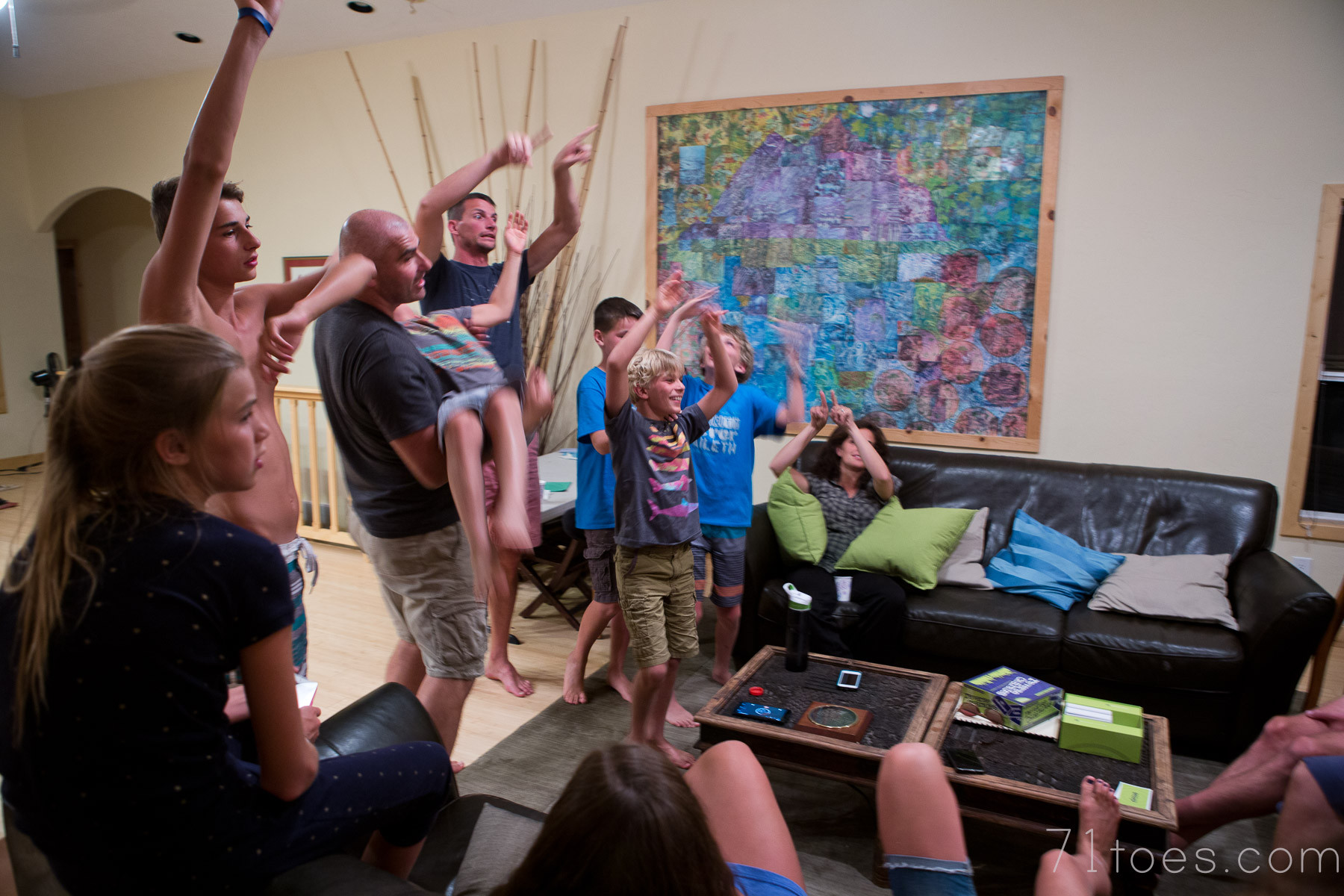 Alt text: Family members actively participating in a Reverse Charades game at a reunion, acting out words.
Alt text: Family members actively participating in a Reverse Charades game at a reunion, acting out words.
Fear Factor: Tastebud Trials
How to Play: The game master prepares a series of “fear factor” foods, ranging from mildly unusual to truly challenging (think olives to pickled items to… less conventional treats).
Gameplay: In rounds, participants try a food item. Those who successfully eat or drink it (swallow, no water allowed!) advance to the next round. Foods get progressively more “interesting.”
Why it’s great for reunions: Fear Factor is adventurous and encourages trying new things in a fun, supportive environment. It’s hilarious to watch reactions and see who is brave enough to be the last one standing.
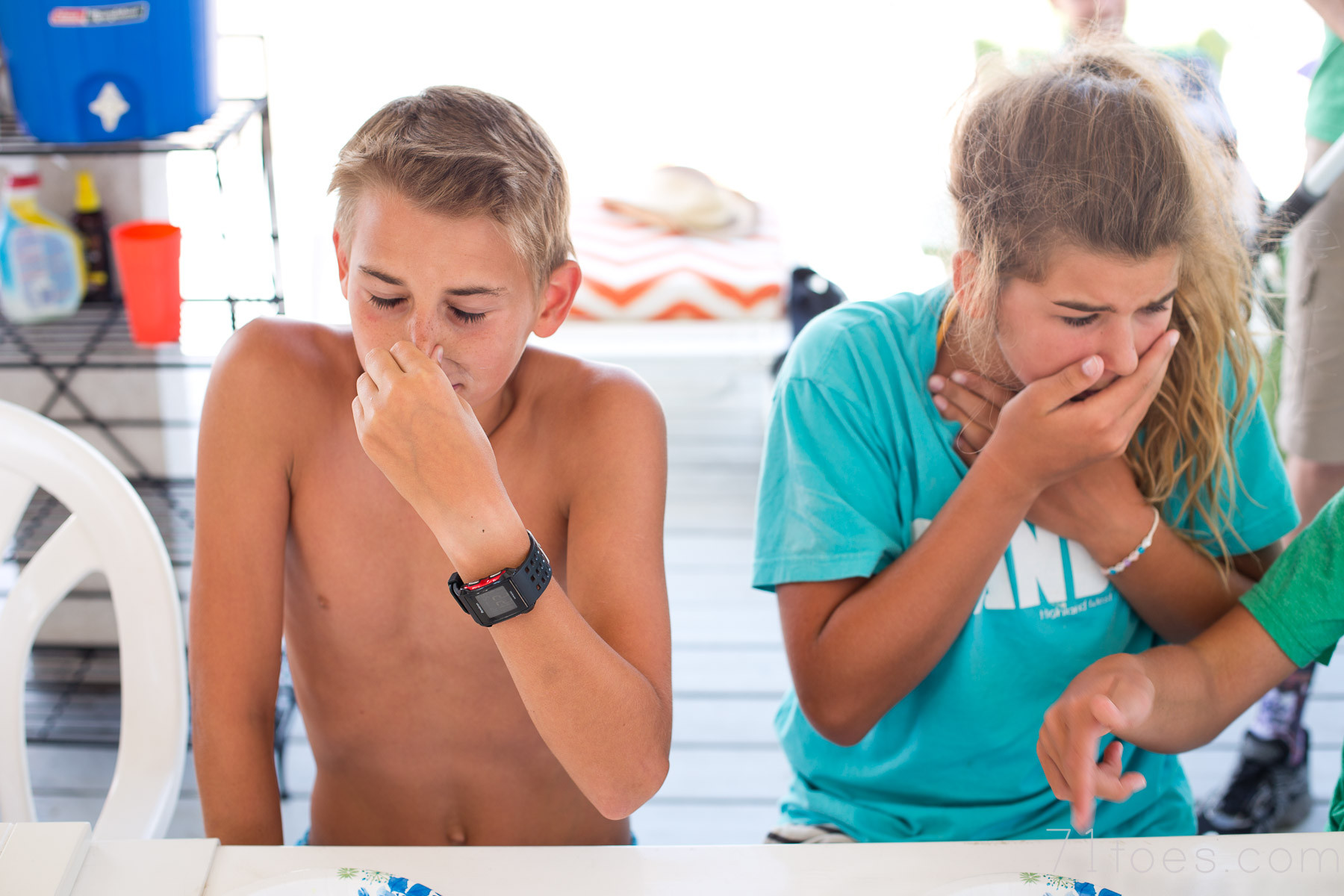 Alt text: A child grimacing while participating in a Fear Factor food challenge at a family reunion.
Alt text: A child grimacing while participating in a Fear Factor food challenge at a family reunion.
 Alt text: A person reacting to tasting a Fear Factor food item, with a mix of disgust and amusement.
Alt text: A person reacting to tasting a Fear Factor food item, with a mix of disgust and amusement.
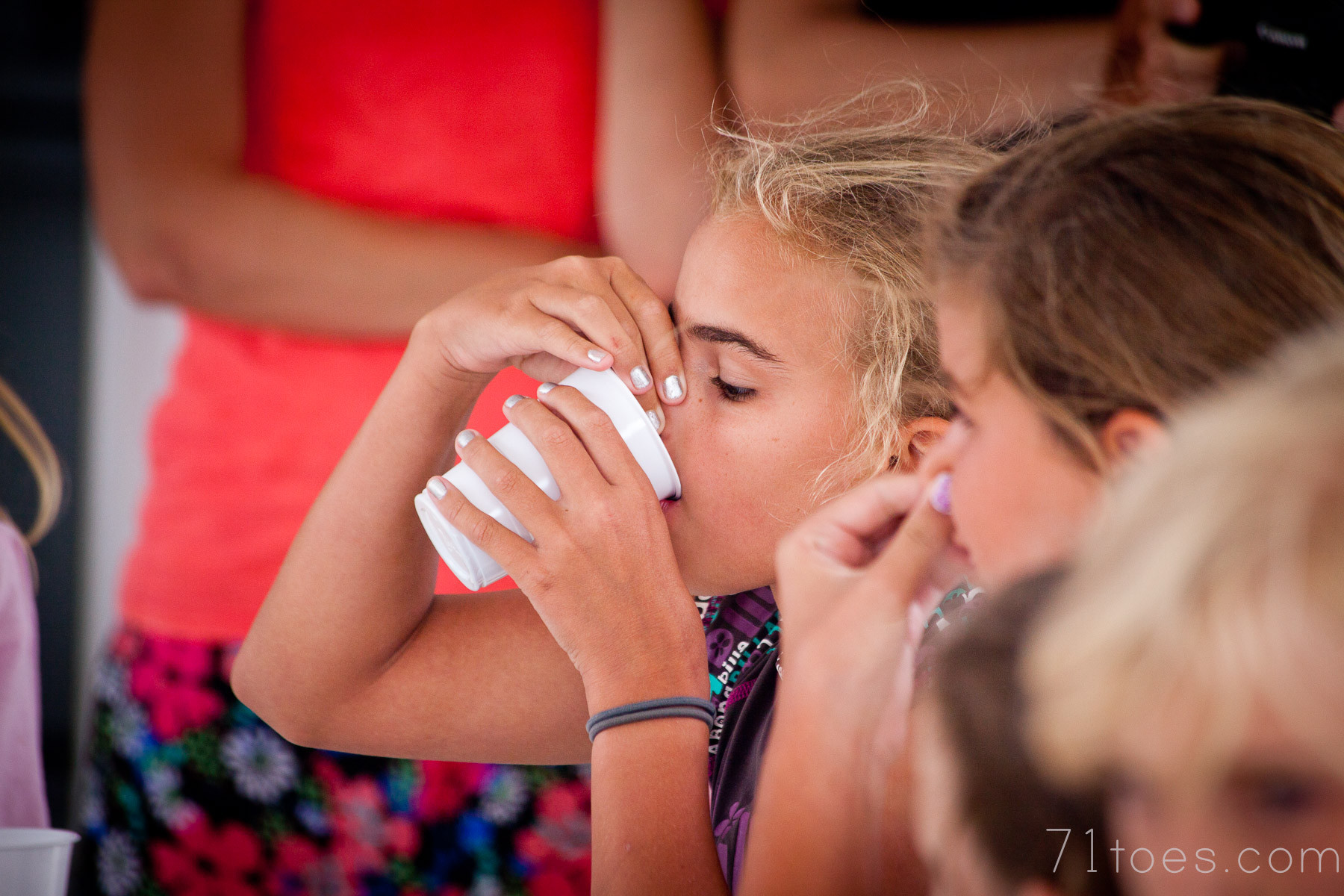 Alt text: A group of children participating in a Fear Factor game, trying different food items during a family reunion.
Alt text: A group of children participating in a Fear Factor game, trying different food items during a family reunion.
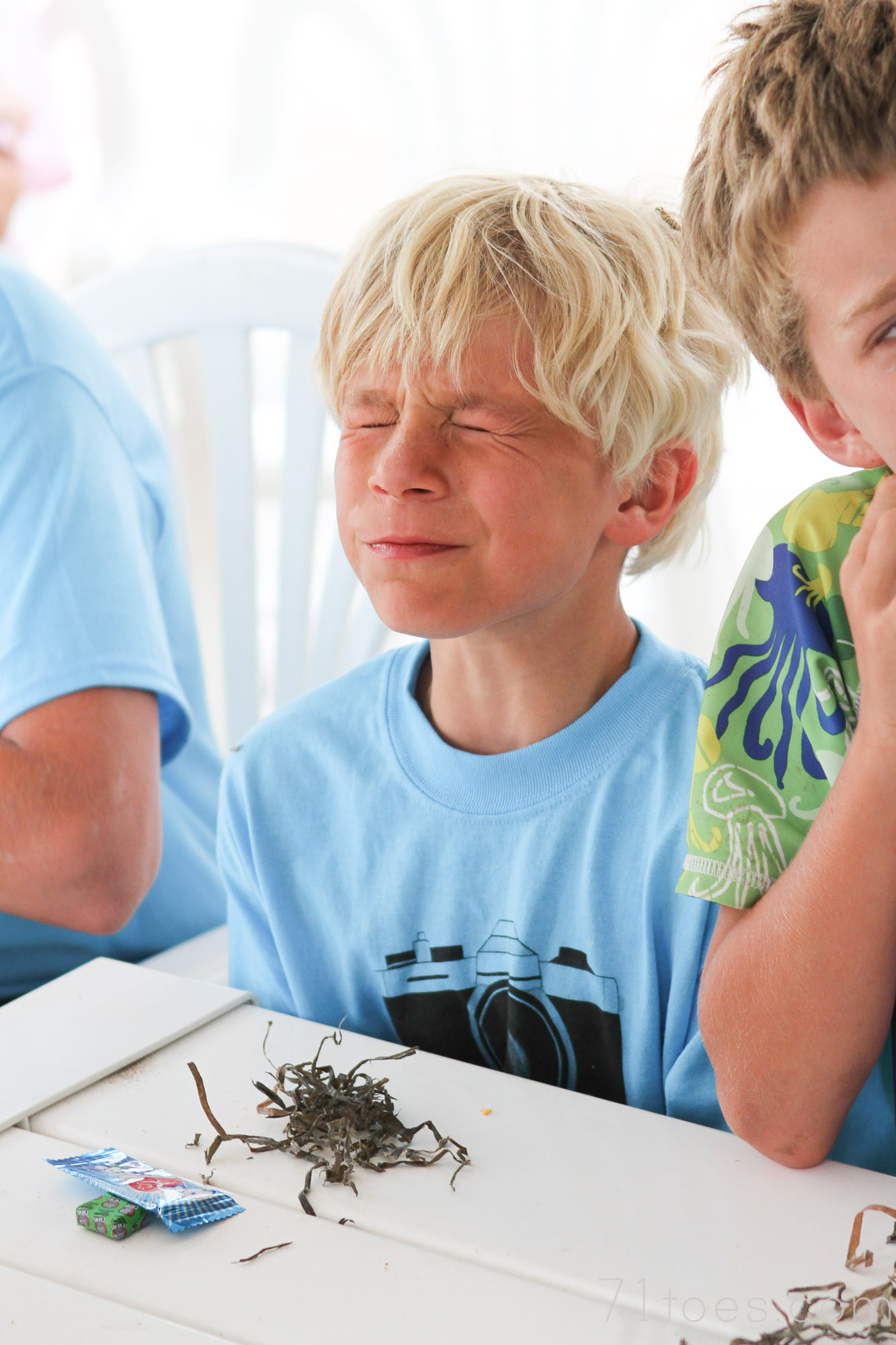 Alt text: A child smiling after successfully completing a round of the Fear Factor game at a family gathering.
Alt text: A child smiling after successfully completing a round of the Fear Factor game at a family gathering.
Triggers: The Secret Action Game
How to Play: One person leaves the room. The group secretly assigns “triggers” to each person remaining. A trigger is an action that, when performed by anyone, signals a specific response from the person assigned that trigger (e.g., if someone folds their arms, another person yells “bananas!”).
Gameplay: The person returns and tries to guess the triggers by observing actions and reactions.
Why it’s great for reunions: “Triggers” is sneaky and funny. Watching people try to subtly perform triggers and others trying to guess them creates hilarious moments of confusion and realization.
 Alt text: A group of people playing the Triggers game at a family reunion, whispering and planning secret actions.
Alt text: A group of people playing the Triggers game at a family reunion, whispering and planning secret actions.
Rock, Paper, Scissors Race: A Hopping Challenge
How to Play: Divide into two teams and line them up facing each other. Mark lines for hopping lanes.
Gameplay: The first person from each line hops towards the opposing team. When they meet in the middle, they play Rock, Paper, Scissors. The loser goes to the back of their line, the winner advances towards the opposite side. The first team to get everyone to the other side wins.
Why it’s great for reunions: This game combines classic Rock, Paper, Scissors with physical activity. The hopping race and face-offs are energetic and exciting for both players and spectators.
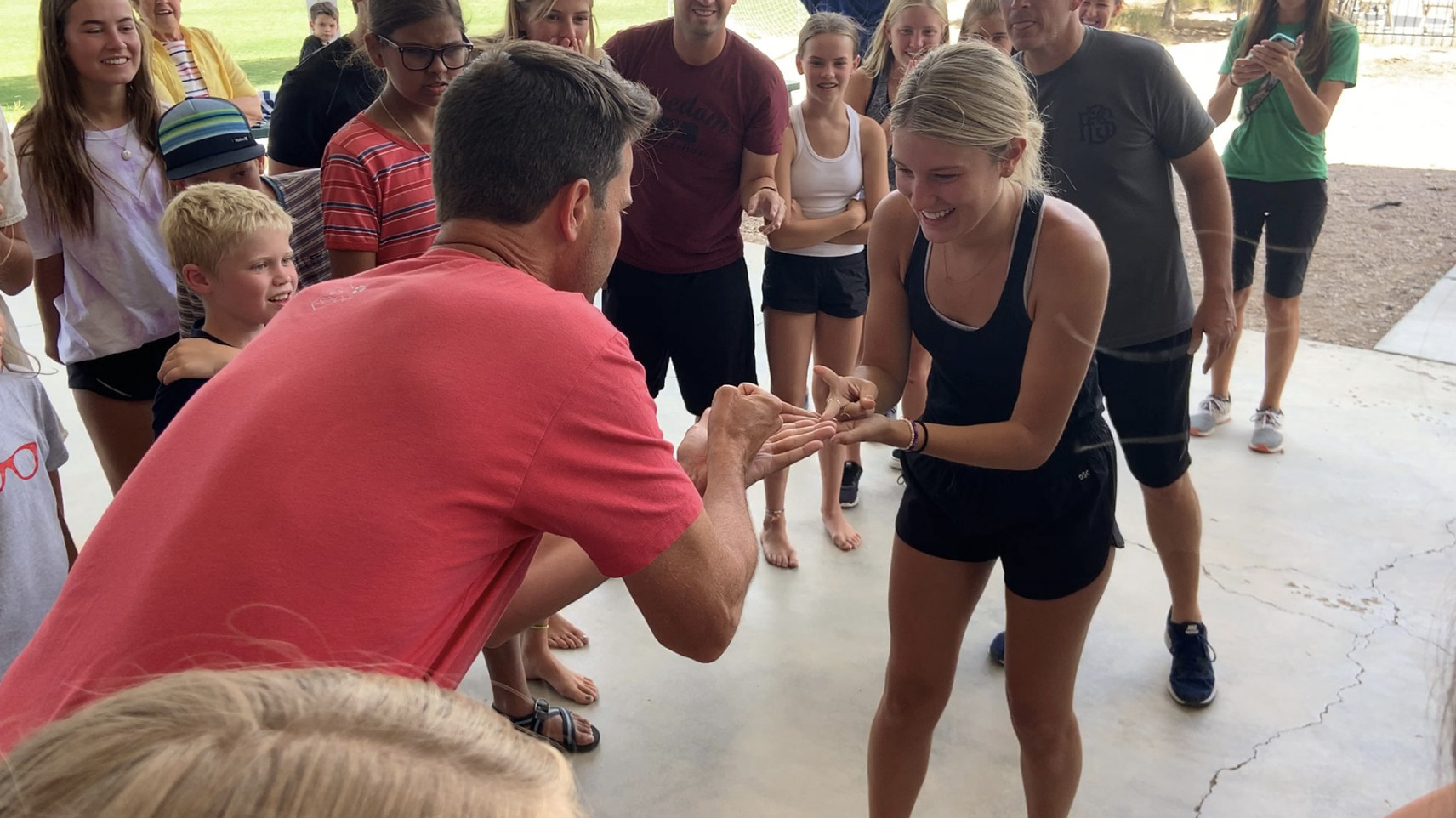 Alt text: Screenshot of a cartoon image depicting the hand gestures for Rock, Paper, Scissors.
Alt text: Screenshot of a cartoon image depicting the hand gestures for Rock, Paper, Scissors.
Alt text: Two teams lined up and ready to play the Rock, Paper, Scissors race at a sunny family reunion.
Alt text: Two people facing off in a game of Rock, Paper, Scissors during the Rock, Paper, Scissors race at a family gathering.
Psychiatrist: Mind-Reading Fun
How to Play: One person leaves the room (the “psychiatrist”). The remaining group decides on a system for answering the psychiatrist’s questions. Systems could be alphabetical answers, answering like a specific family member, or incorporating a subtle action like touching hair while answering.
Gameplay: The psychiatrist returns and asks questions to the group, trying to figure out the answering system.
Why it’s great for reunions: “Psychiatrist” is a classic guessing game that encourages creative thinking and observation. The chosen answering system can be tailored to your family for extra personal and humorous touches.
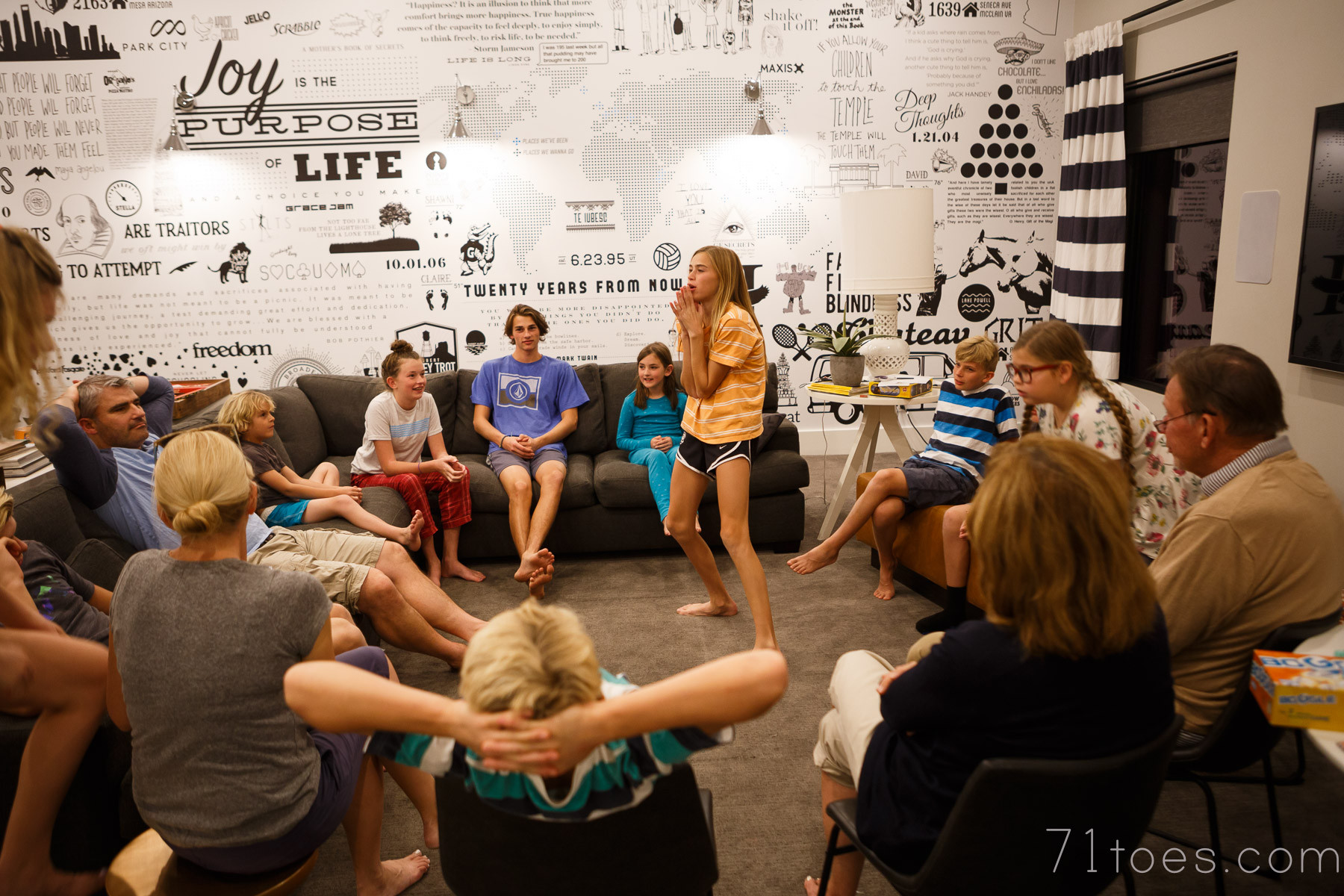 Alt text: A group of people sitting and playing the Psychiatrist game indoors during a family reunion.
Alt text: A group of people sitting and playing the Psychiatrist game indoors during a family reunion.
Little Sally Walker: Dance and Choose
How to Play: Everyone sings the “Little Sally Walker” song. One person skips around the circle while singing.
Gameplay: When the song ends, the skipper stops in front of someone and does a dance. That person must copy the dance exactly and then becomes the new skipper.
Why it’s great for reunions: “Little Sally Walker” is simple, fun, and great for all ages, especially younger children. It gets everyone moving and encourages silly dance moves.
Sentimental Reunion Game Ideas:
For a heartwarming touch, try these games that focus on family memories and stories:
Family Stories: Guess the Storyteller
How to Play: Everyone writes down a short, funny, or memorable personal story from their childhood or life. A designated “reader” reads a story aloud.
Gameplay: After each story, three different people are randomly chosen to elaborate on the story, adding made-up details to sound convincing. Everyone then votes on who they think the original storyteller is. Correct guesses earn points.
Why it’s great for reunions: “Family Stories” is a wonderful way to share memories, learn new things about each other, and enjoy hilarious embellishments of family lore.
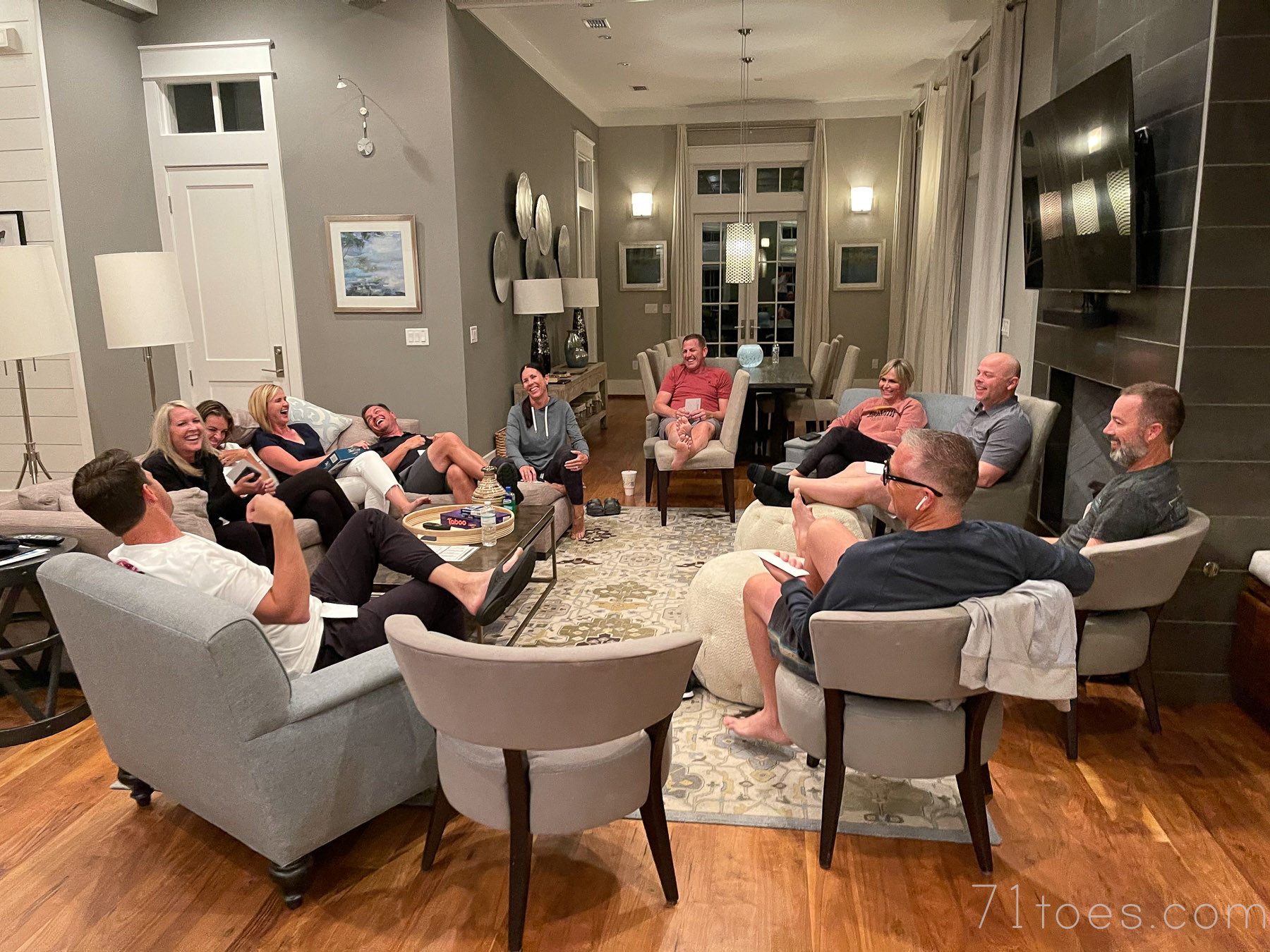 Alt text: People writing down stories on paper for the Family Stories game at a reunion.
Alt text: People writing down stories on paper for the Family Stories game at a reunion.
Family Trivia: Know Your Kin
How to Play: Before the reunion, gather fun facts or stories about family members. Create trivia questions based on these.
Gameplay: Ask the trivia questions to the group. People guess the answer, and the person the trivia is about can share more details.
Why it’s great for reunions: “Family Trivia” is a fun way to test family knowledge and celebrate individual stories and experiences. It strengthens connections by highlighting shared history.
Alt text: Family members playing Family Trivia at a reunion, some using phones, with a television in the background showing a video call.
Classic Big-Group Activities:
Sometimes, simple is best! These classic activities are always a hit:
Classic Slip-N-Slide: Watery Fun
How to Set Up: Buy a large roll of plastic sheeting from a hardware store. Lay it out on a grassy hill, secure it, and wet it down with water and dish soap for extra slipperiness.
Gameplay: Run, slide, and splash!
Why it’s great for reunions: A Slip-N-Slide is a guaranteed way to cool off and have active, carefree fun, especially on a hot day. It’s always a crowd-pleaser.
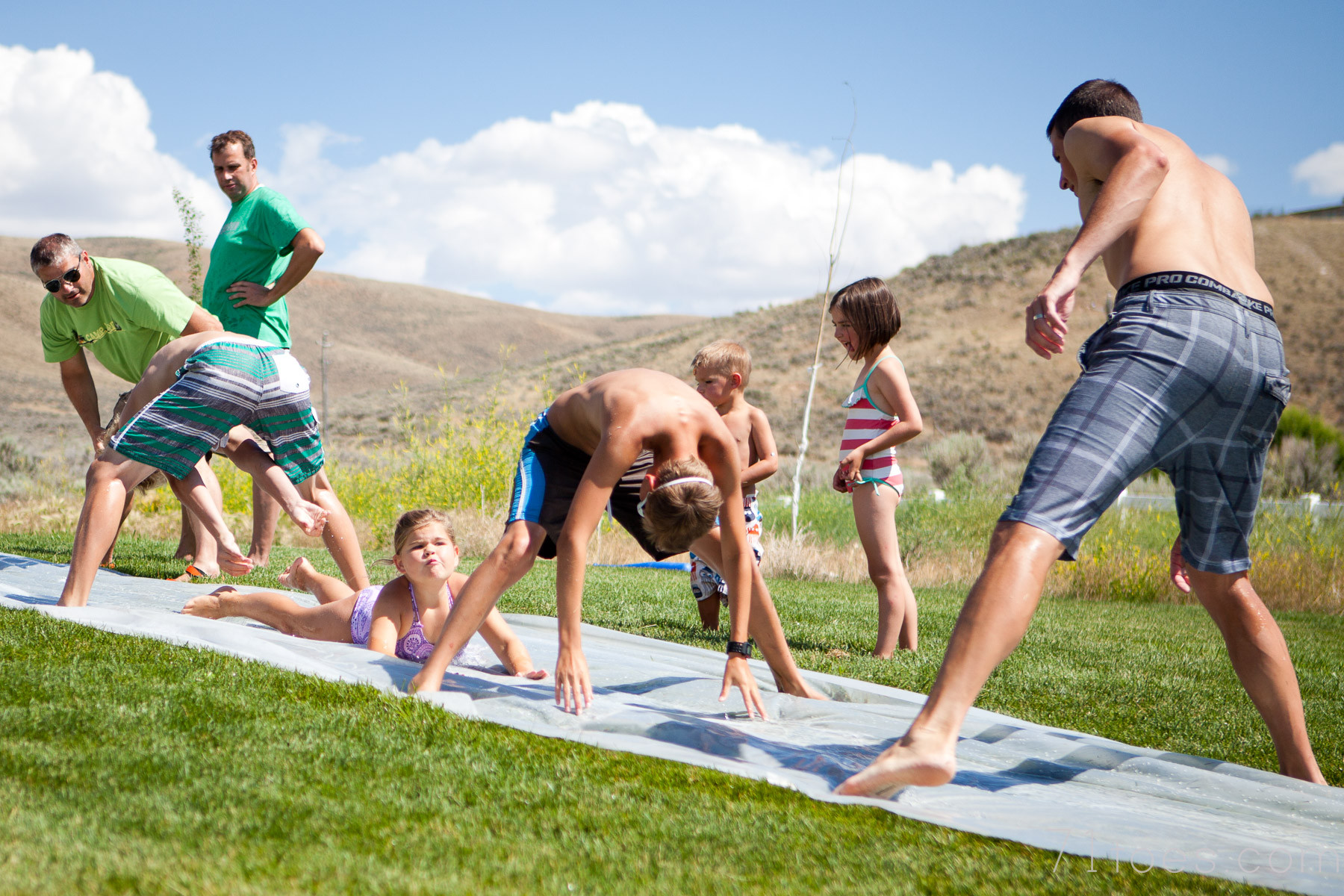 Alt text: Children and adults having fun sliding down a Slip-N-Slide at a family reunion on a sunny day.
Alt text: Children and adults having fun sliding down a Slip-N-Slide at a family reunion on a sunny day.
Relays: Team Races for Everyone
Relay races can be adapted in countless ways! Consider these variations:
- Age-Category Relays: Divide participants by age groups for fairer competition.
- Piggy-Back Races: Team up and give piggyback rides for a fun twist.
- Three-Legged Races: Classic teamwork challenge requiring coordination.
- Gunny Sack Races: Hop to the finish line in sacks for a bouncy race.
- Mystery Relays: Combine different challenges in one race, like running, hopping, and solving a puzzle at the end.
Why they’re great for reunions: Relays encourage teamwork, friendly competition, and physical activity. They can be tailored to suit all ages and abilities, ensuring everyone can participate.
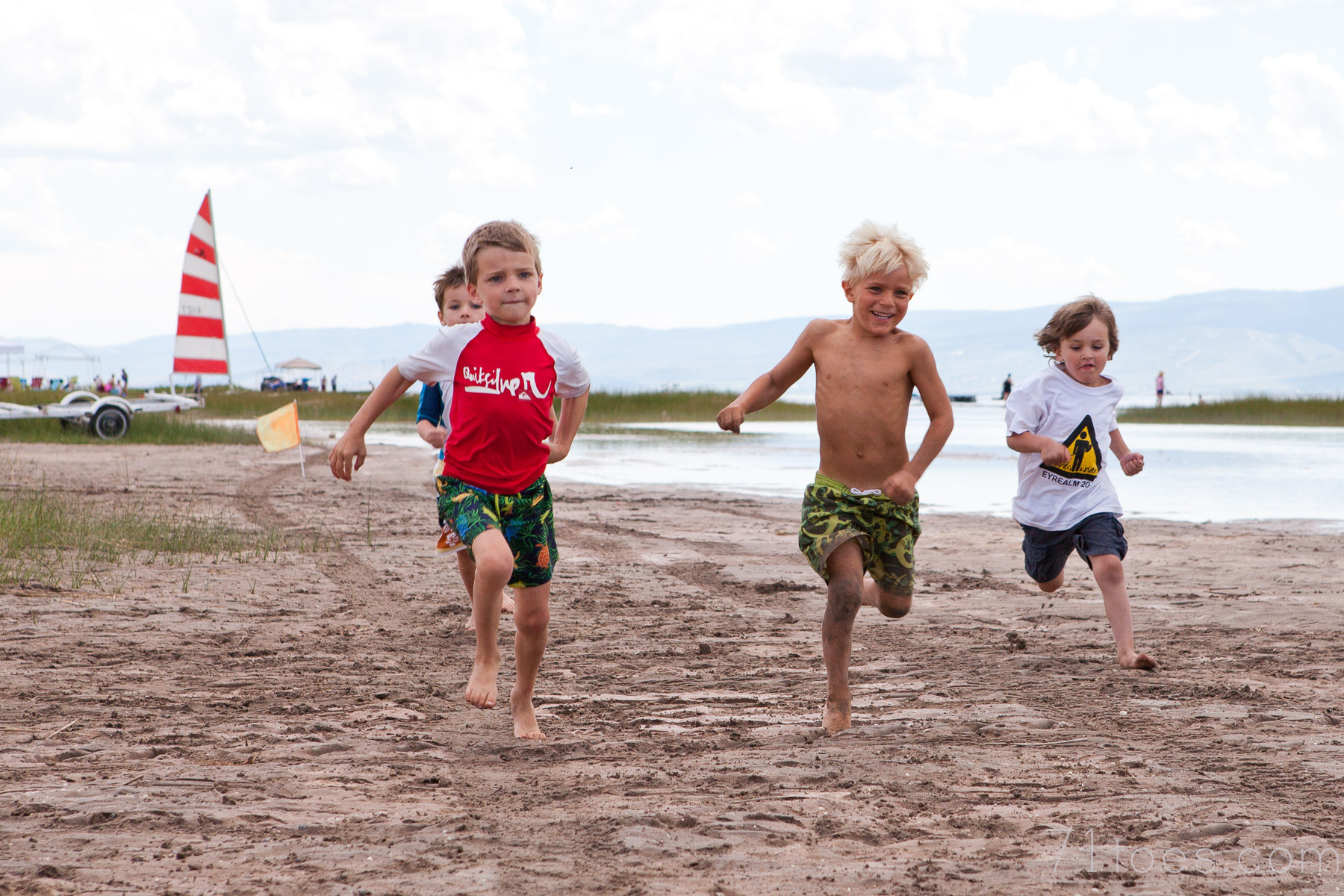 Alt text: Children participating in age-category relay races at a family reunion event.
Alt text: Children participating in age-category relay races at a family reunion event.
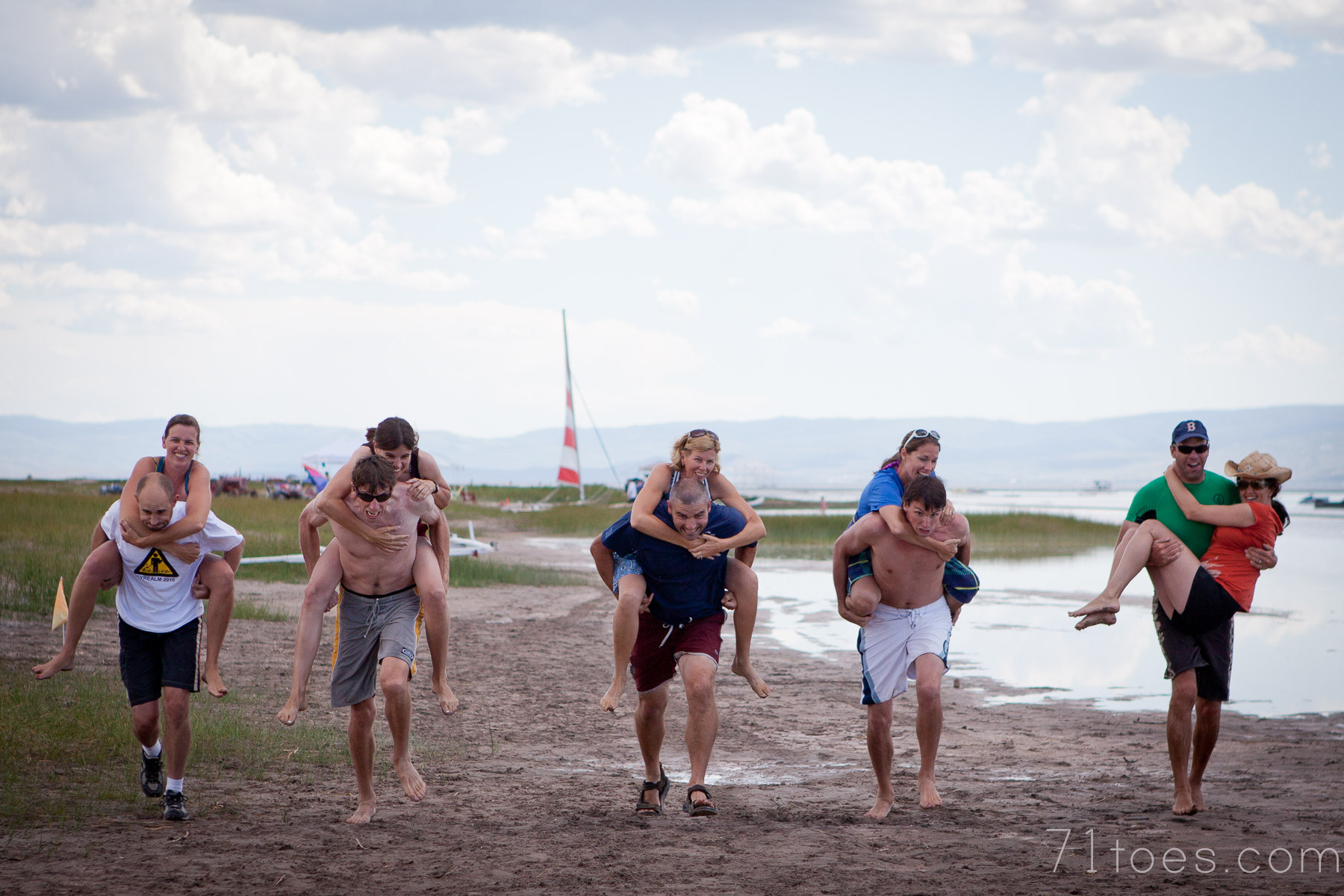 Alt text: A piggyback race in progress during family reunion relay games, with one person carrying another on their back.
Alt text: A piggyback race in progress during family reunion relay games, with one person carrying another on their back.
 Alt text: Another view of a piggyback race at a family reunion, showing participants running towards the finish line.
Alt text: Another view of a piggyback race at a family reunion, showing participants running towards the finish line.
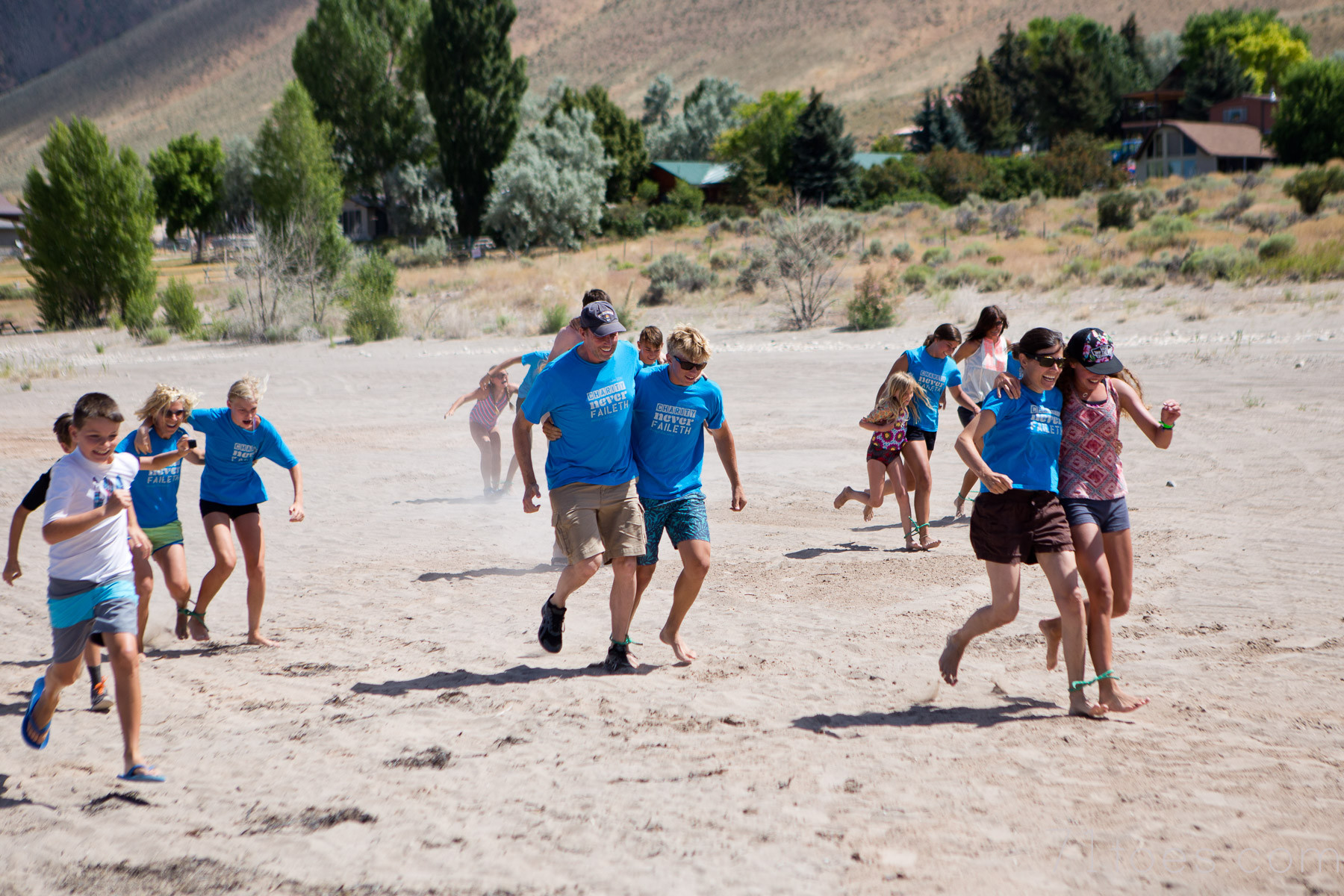 Alt text: Participants in a three-legged race at a family reunion, running with their legs tied together.
Alt text: Participants in a three-legged race at a family reunion, running with their legs tied together.
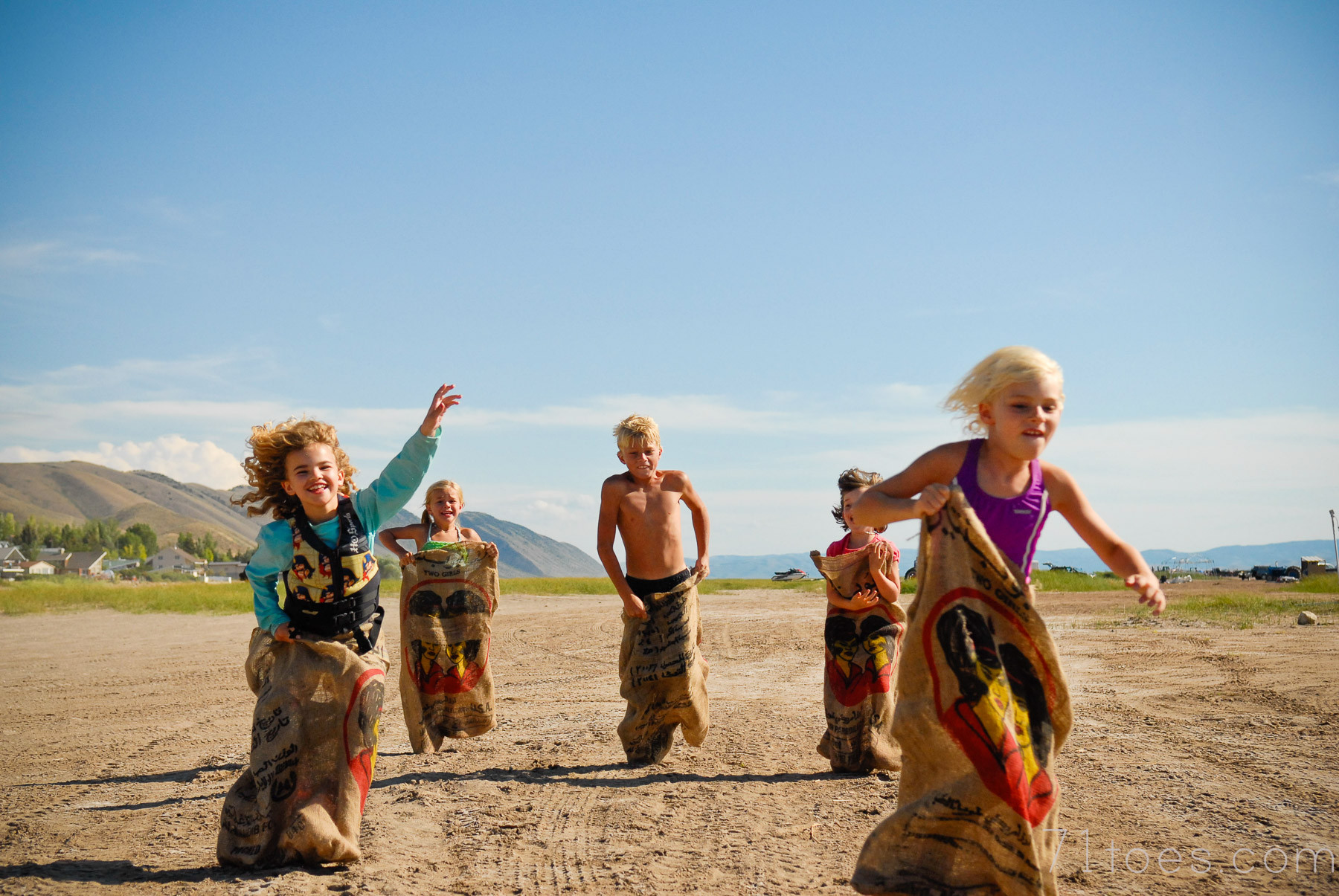 Alt text: Children participating in gunny sack races at a family reunion, hopping in sacks towards the finish line.
Alt text: Children participating in gunny sack races at a family reunion, hopping in sacks towards the finish line.
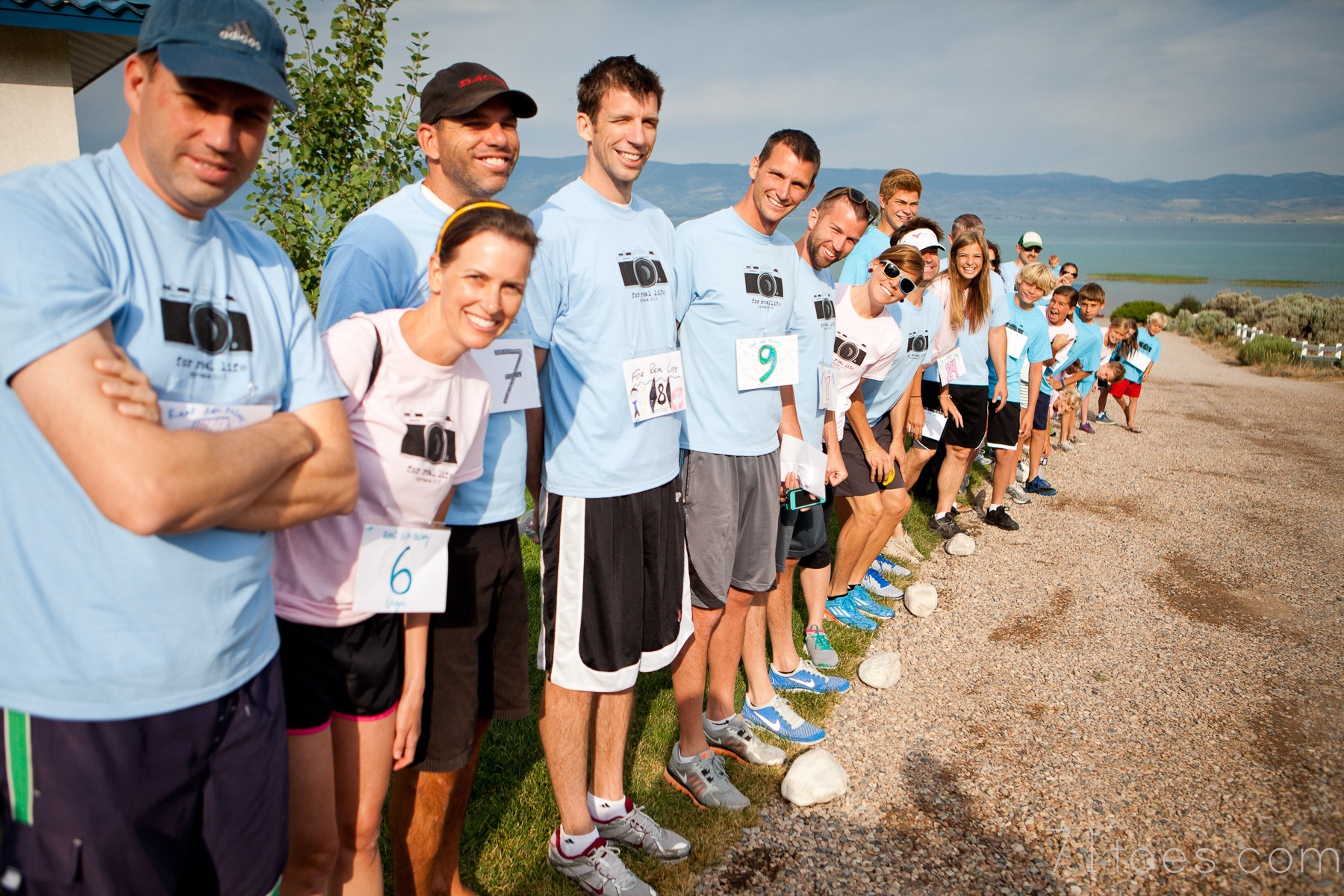 Alt text: A group of people holding milkshakes after completing a relay race at a family reunion, celebrating with treats.
Alt text: A group of people holding milkshakes after completing a relay race at a family reunion, celebrating with treats.
 Alt text: Close-up of people holding milkshakes, rewarding themselves after a family reunion relay race.
Alt text: Close-up of people holding milkshakes, rewarding themselves after a family reunion relay race.
Water Balloon Toss: Splash Zone Fun
How to Play: Divide into pairs. Partners toss water balloons back and forth, taking a step back after each successful catch.
Gameplay: Pairs continue until only one pair remains with an unpopped balloon, or until everyone is happily soaked!
Why it’s great for reunions: A Water Balloon Toss is a refreshing and fun way to cool down on a warm day. It’s simple to organize and always results in laughter and splashes.
Photo Scavenger Hunt: Capture the Memories
How to Play: Create teams and a list of photo challenges – specific things to photograph (e.g., “bird in flight,” “everyone jumping,” “artistic shot of the sky”).
Gameplay: Teams go out to a designated area (park, neighborhood, etc.) and try to capture photos of everything on the list within a set time. Bonus points for creativity!
Why it’s great for reunions: A Photo Scavenger Hunt is adventurous, encourages teamwork, and creates lasting visual memories of the reunion. It can be themed to the location or family interests.
Alt text: People using cameras during a photo scavenger hunt at a bird refuge, focusing on capturing nature shots.
Alt text: A group of people looking at photos on a camera screen during a photo scavenger hunt at a family reunion.
 Alt text: Screenshot of a list of photo scavenger hunt challenges, including creative and action-oriented prompts.
Alt text: Screenshot of a list of photo scavenger hunt challenges, including creative and action-oriented prompts.
Steal the Bacon: Fast Feet and Team Points
How to Play: Divide into two teams lined up opposite each other. Assign numbers to each person on both teams. Place an object (“the bacon”) in the center.
Gameplay: The host calls out a number. The players with that number from each team race to grab the “bacon” and return to their line. The team whose player gets the bacon first scores a point. Team with the most points wins.
Why it’s great for reunions: “Steal the Bacon” is fast-paced, competitive, and great for burning off energy. It’s exciting to watch and participate in, especially with competitive family members!
Alt text: People playing Steal the Bacon at a family reunion, running across a grassy area to grab the “bacon” object.
One and Done: Dice Roll Gamble
How to Play: All you need is one die and paper to keep score. Each person has a scorecard with three rows of 1-10 for rounds. Decide on a prize for the winner and a consequence for the loser.
Gameplay: Players take turns rolling the die, adding the rolled number to a group score. Rolling a “two” doubles the current score. Players can choose to “opt out” and record the current score at any time. However, if someone rolls a “one,” the round ends, and anyone still “in” scores zero for that round. After ten rounds, scores are tallied. Highest score wins, lowest score loses (and faces the consequence!).
Why it’s great for reunions: “One and Done” is a game of chance and strategy with an element of risk. The potential for doubling scores and the threat of rolling a “one” create suspense and excitement. The pre-determined prize and consequence add to the fun and stakes!
 Alt text: A small group of friends playing the One and Done dice game indoors, keeping score on paper.
Alt text: A small group of friends playing the One and Done dice game indoors, keeping score on paper.
 Alt text: A large group of people playing the One and Done dice game outdoors, using phones to track scores.
Alt text: A large group of people playing the One and Done dice game outdoors, using phones to track scores.
 Alt text: A scorecard for the One and Done dice game, showing scores recorded for different rounds.
Alt text: A scorecard for the One and Done dice game, showing scores recorded for different rounds.
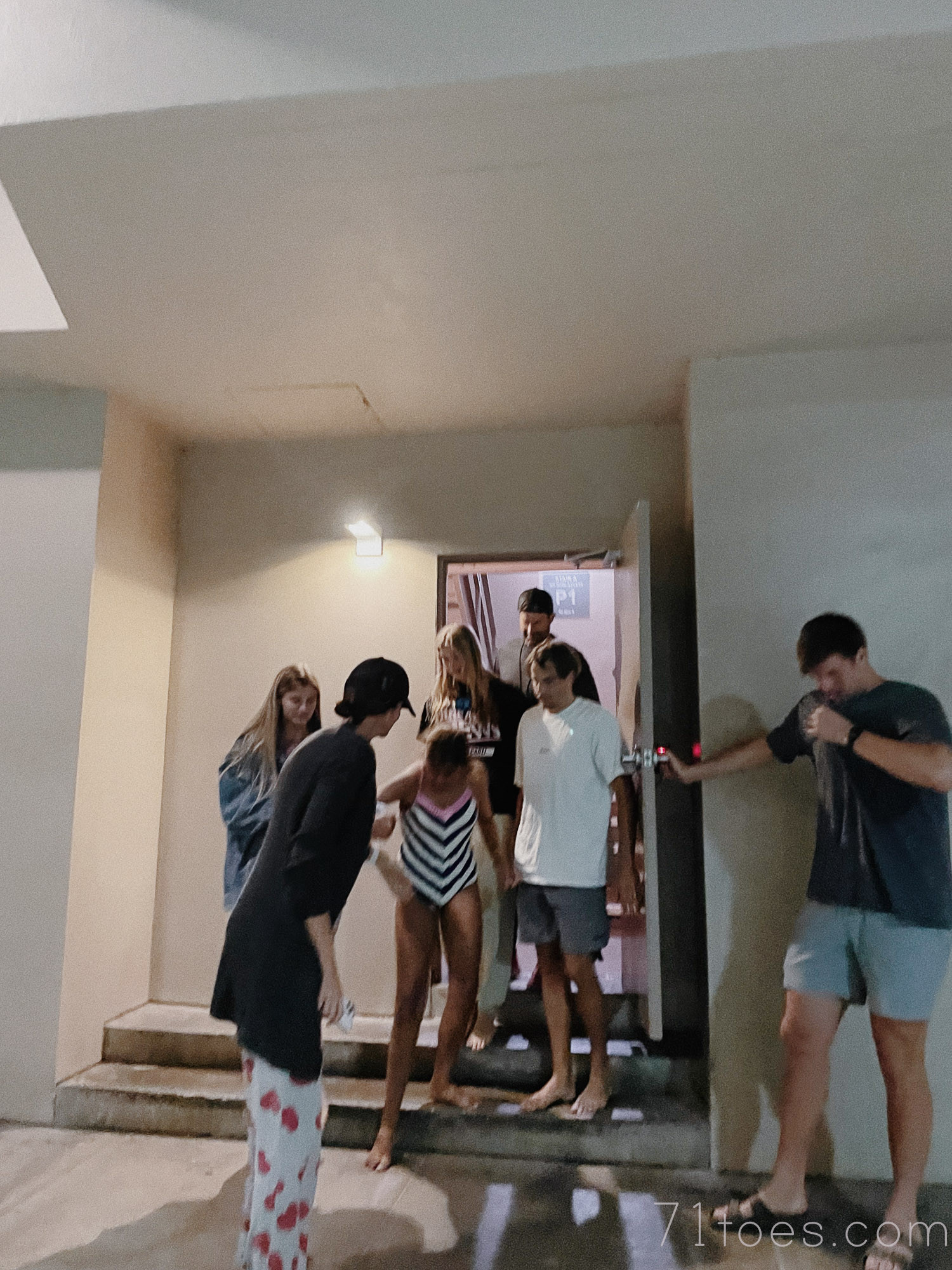 Alt text: A person jumping into water as a consequence for losing the One and Done game at a family reunion.
Alt text: A person jumping into water as a consequence for losing the One and Done game at a family reunion.
 Alt text: Another angle of a person jumping into water as a consequence of losing the One and Done game at a family gathering.
Alt text: Another angle of a person jumping into water as a consequence of losing the One and Done game at a family gathering.
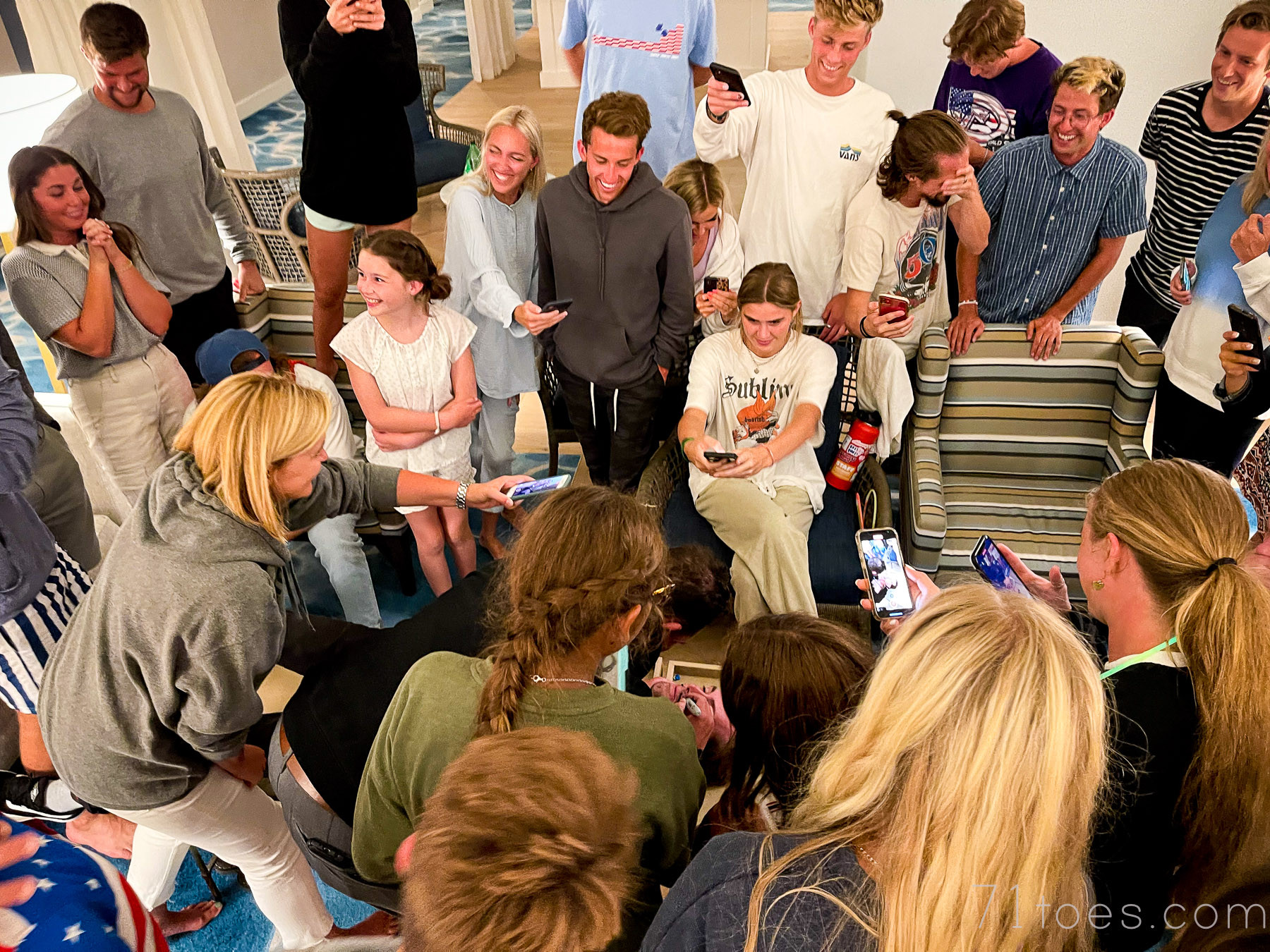 Alt text: A person receiving a drawn-on mustache and signatures as a consequence for losing the One and Done game at a family reunion.
Alt text: A person receiving a drawn-on mustache and signatures as a consequence for losing the One and Done game at a family reunion.
There you have it – a fantastic list of family reunion games to make your next gathering unforgettable! If you have any more game ideas or need further clarification, let me know. Happy game-playing and creating wonderful family memories!
Explore More Game Ideas:
Plan Your Perfect Reunion:
